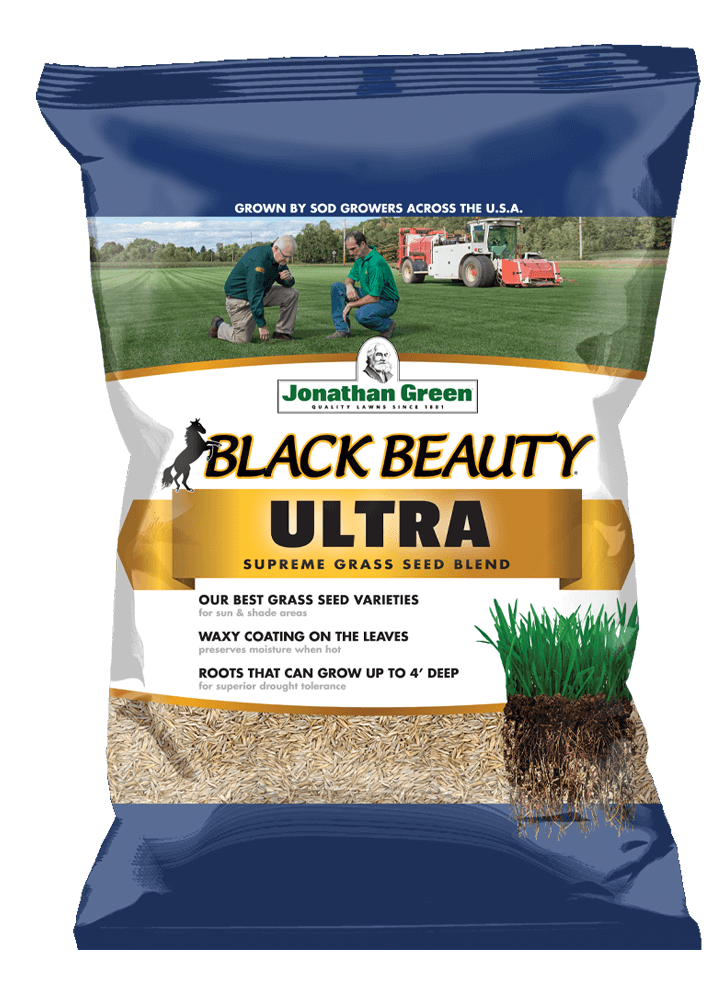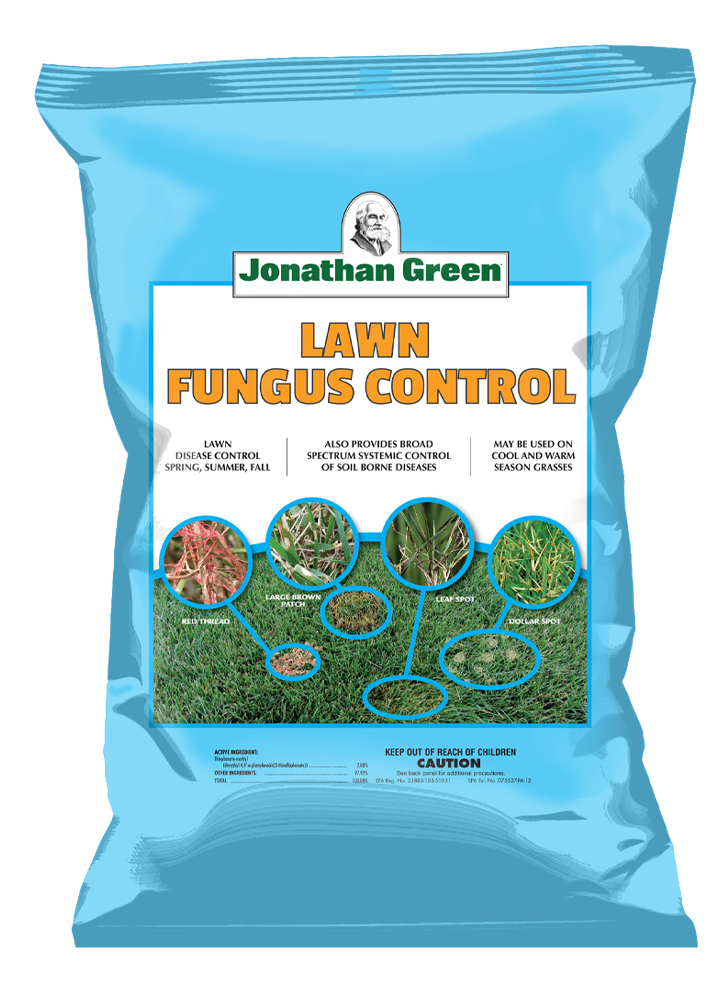Everything You Need to Know About Lawn Fungus
Diagnosing and controlling fungus in your lawn can be a daunting task. Knowing the best practices to prevent fungus, which fungicide to use, and when to apply it, is the key to protecting your outdoor spaces.

What is Lawn Fungus?
Lawns are living entities made up of millions of microorganisms that allow your grass to thrive. Fungus spores exist in every lawn, and most of the time they are beneficial. However, when your lawn is stressed, and conditions are right, these spores begin to multiply and become problematic.
What Causes Lawn Fungus?
Excessive heat and humidity are the leading causes of fungus. As mentioned above, fungus often occurs in times of stress, such as drought, long rainy seasons, and overwatering.
Fungus often develops because water stays on the leaf surface far too long. Mycelia (or the vegetative part of fungus) use the water as a “highway” to travel from leaf-to-leaf. This allows the fungus to spread to other parts of the lawn.
This is also the reason that you should not walk through your lawn when it is battling fungus. If there is moisture on the lawn you can spread the fungus across the grass.
Another cause of fungus is undernourishment. When grass does not have the right amount of nutrients it is more susceptible to disease.
After it rains, there’s typically more water available in the soil for the grass plants. When plants take up that water, they are also taking up nutrients (such as nitrogen) that’s in the soil. The more it rains, the faster that nitrogen is used up. If the nitrogen is not replenished, the problem will continue.
Will lawn fungus go away on its own?
Unfortunately, fungus will not go away on its own. You must treat it and then start implementing practices to prevent it from coming back in the future.
If fungus is left untreated it will spread, destroying the hard work you have put into your lawn.
Tell Tale Signs of Fungus
- Brown or “dead” looking spots on grass blades
- Dead or dry looking spots on your lawn (despite regular irrigation)
- Discolored patches that grow in size
- Threadlike or powdery coatings on grass blades
Types of Fungus
Red Thread
Red Thread (note the light red hue to the damaged grass blades) is a cool-season turf disease that thrives in undernourished lawns. Pink in color, red thread spreads by pustules “exploding” and spitting fungal material up to 8 feet. This is why red thread damage seems to jump from spot to spot.
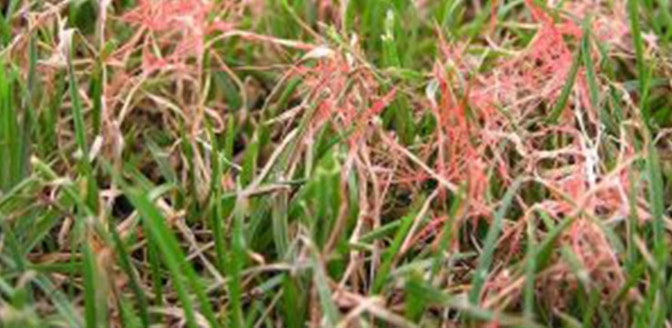
Dollar Spot
Dollar Spot appears as small circles of dead or dry grass on lawns. They often look sunken and can be alone or in clusters. This fungus thrives in hot, humid summer weather.
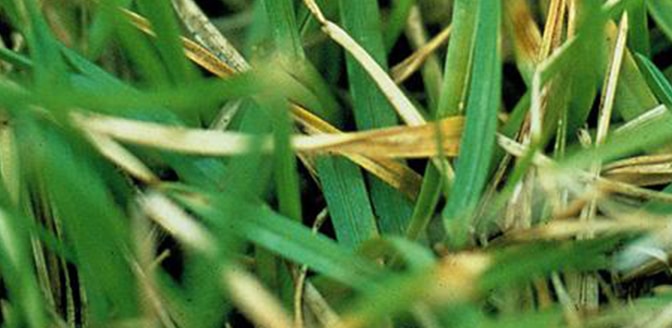
Brown Patch
Brown Patch often appears in roughly circular or irregular patches that appear dry or dead. It thrives in hot, humid summer weather. Brown Patch often forms as a circle of dry brown grass with a narrow darker ring around it.
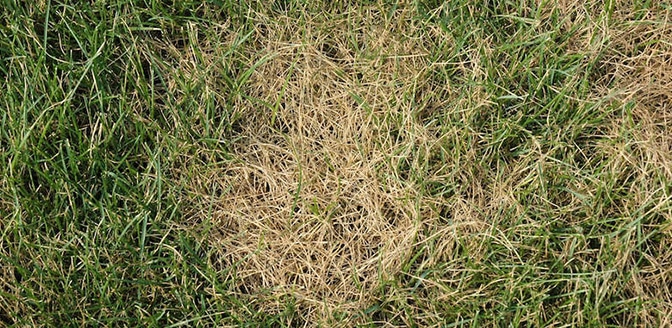
How to Prevent Fungus
Water early in the day
Watering early in the day will allow your lawn to absorb the water and then dry off throughout the day. Watering late in the day or in the evening does not allow the lawn to dry and will promote fungus. Because fungus moves through water, a wet lawn will allow fungus to spread much faster.
Sharpen mower blades
It is always important to mow with sharp mower blades, but especially so when trying to prevent fungus. A dull blade can shred the grass blades leaving many openings for disease to enter.
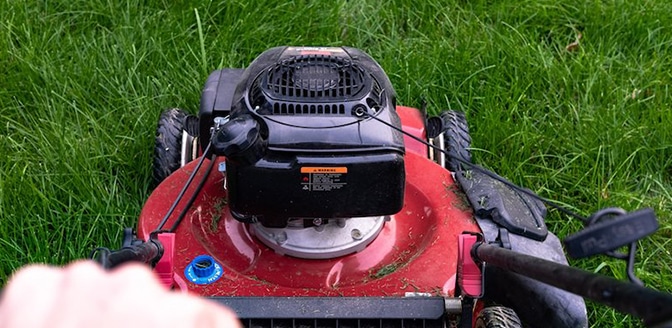
Raise mowing height
When mowing, do not remove more than ⅓ of the grass blade. This will allow the grass to stay healthy and strong. Scalping the lawn(mowing too short) stresses the root system.
Don’t over or under fertilize
Use high nitrogen fertilizer only in the spring. High nitrogen in late October/November will promote snow mold next year. When lawns have the right nutrients they need to grow, they are less susceptible to disease. Diseases such as red thread can often be controlled by adding nitrogen to your lawn.
Dethatch
Thatch is a layer of organic matter between the crown of the grass plants and the soil layer. Thatch can appear as a result of an imbalance in your soil or improper lawn maintenance practices.
If the microbes in your soil are not plentiful they cannot devour the organic matter in the soil quick enough. This may result in a thatch layer developing. Up to a half inch of thatch is okay, but too much thatch robs the lawn of the ability to absorb water and nutrients efficiently. It can also cause fungus in the lawn.
We recommend removing thatch in the fall. Thatching brings up weed seeds and these are more prevalent in the spring. Use a heavy rake or thatching machine as needed to keep thatch to a minimum. The regular use of organics will help to keep thatch in order.
Apply Love Your Soil
As mentioned above, fungus moves through water. Jonathan Green Love Your Soil® relieves compaction and increases air flow. This will disrupt the movement of water and prevent fungus from spreading to other parts of the lawn.
Diversify Your Grass Species
A lawn with only a single species of grass will allow fungus to spread quickly. If the grass variety in your lawn is primarily Kentucky Bluegrass, overseed in the fall with tall fescue or a tall fescue/ryegrass mixture.
Jonathan Green Black Beauty® Ultra Grass Seed contains 80% Tall Fescue, 10% Kentucky Bluegrass and 10% Perennial Ryegrass for optimal species diversity.
Use Calcium
Even for lawns that have a balanced pH of 6.2-6.8, it is important that all lawns get a good dose of calcium in the spring. Calcium is important to grass plants to help build strong cell walls, to promote disease resistance, and to enable the grass to utilize nutrients.
If your grass is lacking calcium, check out Jonathan Green’s line of Mag-I-Cal soil amendments.
Apply Lawn Fungus Control
Applying a fungicide should be your last line of defense. When it comes to lawn care, it is always better to prevent a problem, than to fix it once it has occurred. Following prevention techniques will save you time, energy and money.
However, if your lawn currently has, or has had fungus in the past it is best to apply Lawn Fungus Control. This product will both treat and prevent lawn fungus.
Mentioned Products
How to Treat Lawn Fungus
Choose the Correct Product
Some lawn fungicides are “broad spectrum,” meaning they can control the spread of many diseases while others are “narrow spectrum,” meaning they only affect a few (or one) disease.
Choosing the right product is where disease identification is important. Using the wrong product for a disease that was misidentified may have no effect on the disease at all.
Carefully read the product label to make sure you are choosing the right fungicide for your needs.
Apply Fungicide
Lawn Fungus can be tricky to cure and may need more than one application of fungicide. Most fungicides can be reapplied every 14 – 28 days, but be sure to read the product label.
If you apply the same fungicide many times, your lawn can build up a resistance to the active ingredients. Due to this resistance, fungus may appear in your lawn even if you put down a preventative treatment.
Helping Prevent Resistance to Fungicides
When using fungicides for recurring lawn disease problems, you need to alternate fungicides. Lawn diseases can become resistant to fungicides with repeated use. It is not as simple as picking two different products or two different brands; you will want to select at least two fungicides with different modes of action or active ingredients.
Natural Remedies for Lawn Fungus
There are many natural remedies for lawn fungus. These include baking soda solutions, neem oil, and compost teas. For the best results, you should use these natural options early in the season as a preventative rather than waiting to treat your lawn after you already have a fungus.
Neem Oil
This is one of the better natural solutions available. Dilute 2 oz of neem oil into 1 gallon of water. Apply 2.5 gallons of the spray solution per 1,000 sq ft. You will typically need to apply this solution two or three times on a 7 – 14 day interval to ensure effective control.
Baking Soda
Using a weak baking soda solution to treat lawn fungus issues can be effective but you must be cautious. Baking soda (Sodium Bicarbonate) is a salt and like all salts, can damage your lawn.
Grass type and environmental conditions such as rainfall, air temperature and lawn stress all affect how your grass reacts to the baking soda, so you run the risk of doing more harm than good.
Compost Tea
While the use of compost teas are generally considered a good way to increase the organic content of your lawn, research on using them as a natural fungicide is limited. When applied in the spring, compost teas will help to boost the overall health of your lawn and can help your lawn to be less susceptible to getting a fungus in late spring or summer.
However, compost teas alone are usually insufficient in preventing turfgrass diseases.
Clove Oil
The best natural fungicides for both the preventive and curative treatment of lawn fungus will be products utilizing clove oil as the active ingredient. Eugenol, or clove oil, has been used for years as both an organic insecticide and fungicide with excellent results. Be sure to read the product label for specific mixing and application directions.
Overview
Lawn fungus can be tricky to cure, but as described here, is easy to prevent! Taking the time now to implement these practices will save you a lot of time, money, energy, and most importantly, frustration in the future.

